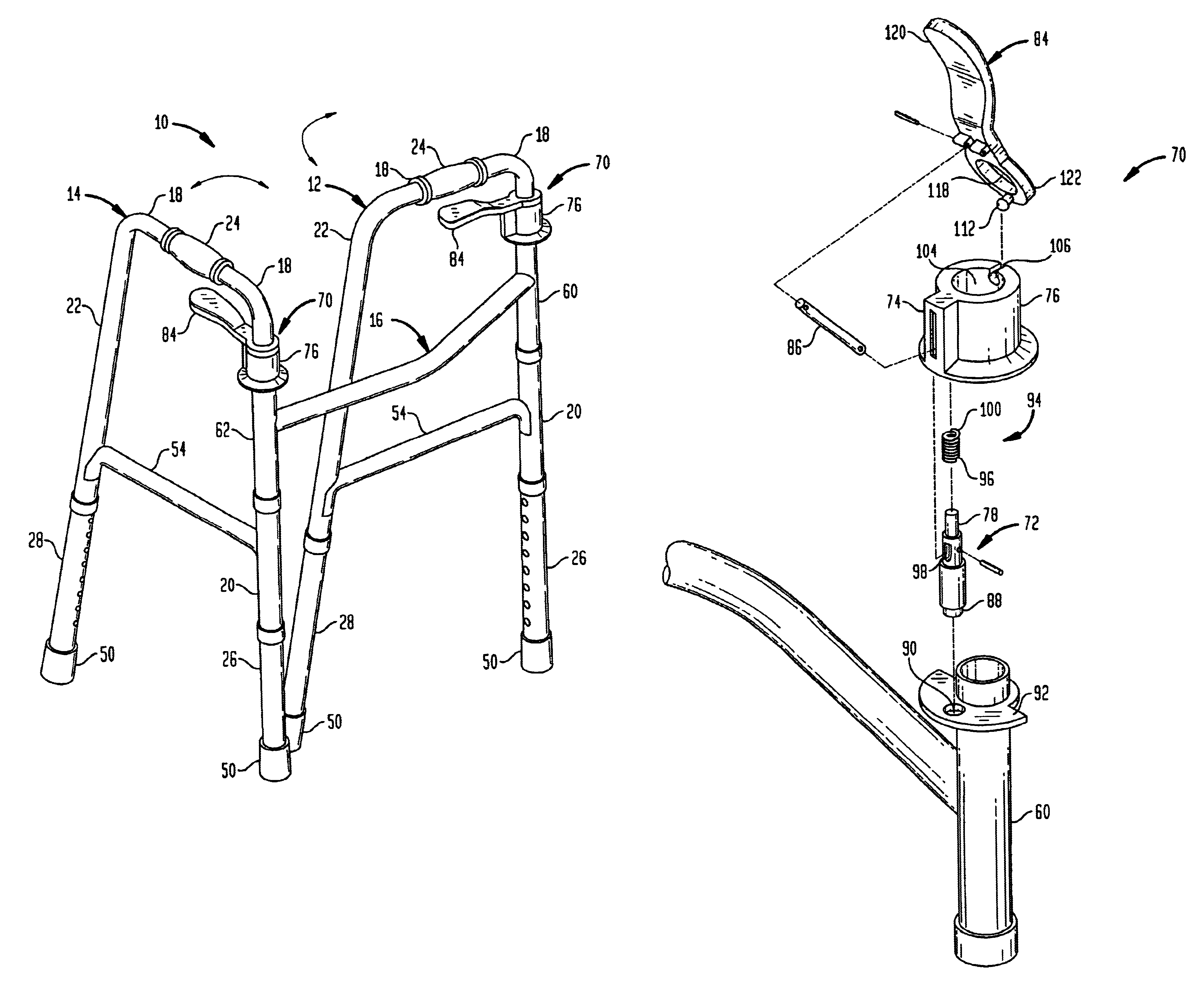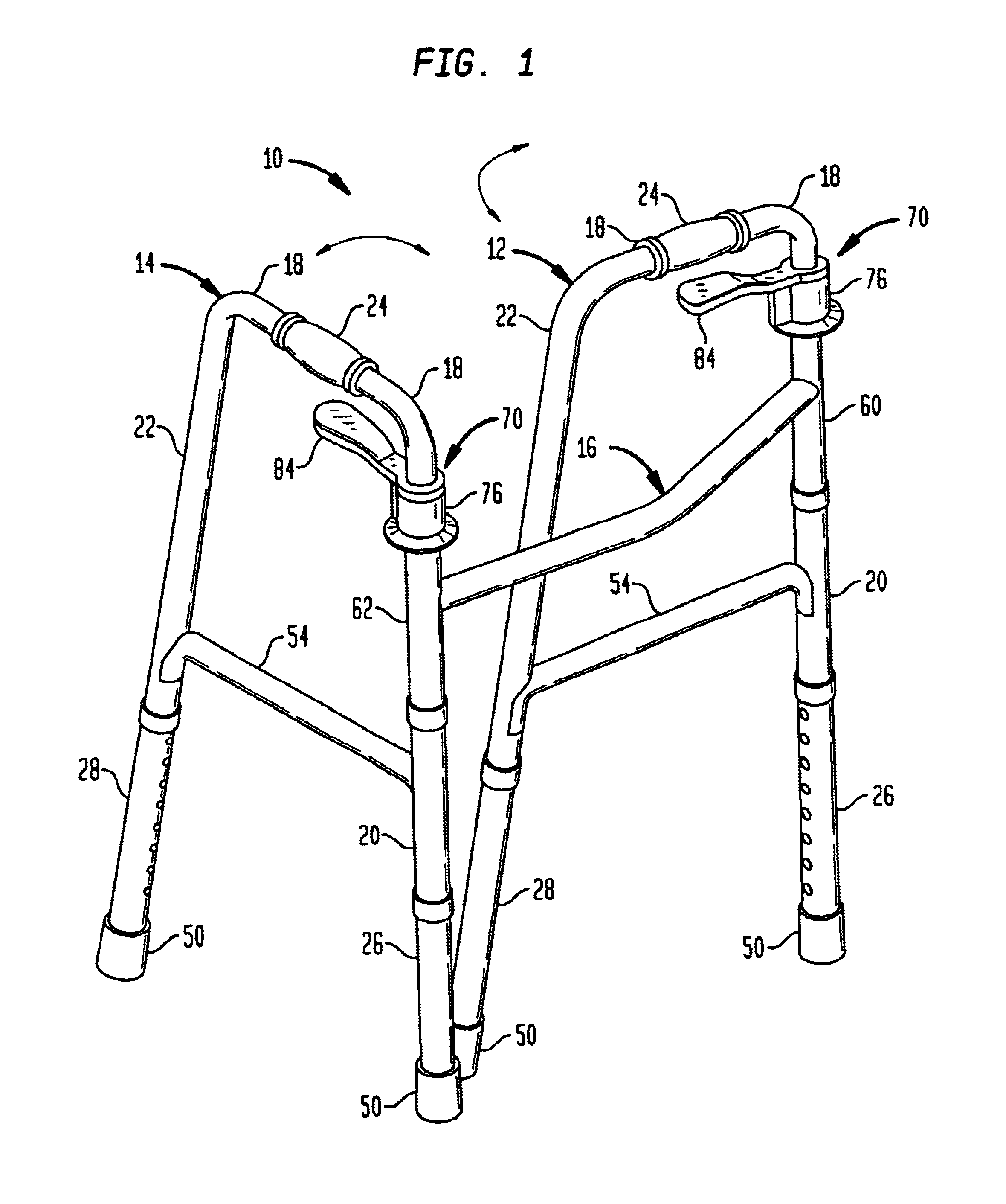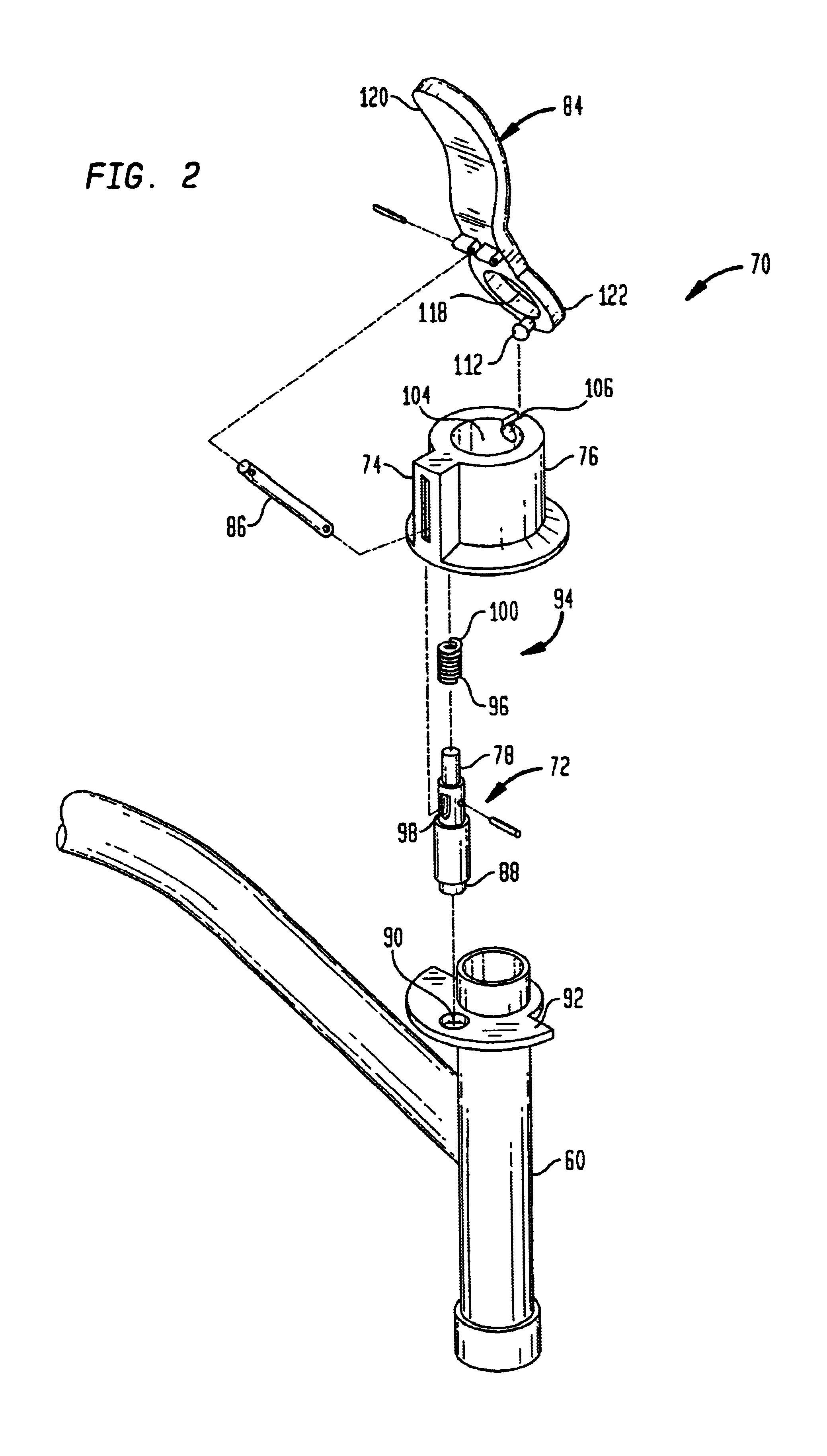Lock release mechanism for foldable walkers
a folding walker and lock release technology, applied in mechanical devices, couplings, manufacturing tools, etc., can solve the problems of limited manual dexterity of handicapped people, limited dexterity, and prior art locking mechanisms used in connection with foldable walkers
- Summary
- Abstract
- Description
- Claims
- Application Information
AI Technical Summary
Benefits of technology
Problems solved by technology
Method used
Image
Examples
Embodiment Construction
[0014]The present invention will now be described more fully hereinafter with reference to the accompanying drawings in which an exemplary embodiment of the invention is shown. This invention may, however, be embodied in many different forms and should not be construed as being limited to the embodiment set forth herein. Rather, the embodiment is provided so that this disclosure will be thorough and complete, and will fully convey the scope of the invention to those skilled in the art.
[0015]Referring now to the drawings wherein the showings are for purposes of illustrating an exemplary embodiment of the invention only and not for purposes of limiting same, FIG. 1 shows a walker 10 which includes a pair of spaced side frames 12 and 14 and a cross brace 16 for connecting the two side frames. Side frames 12 and 14, and cross brace 16 can be made from a lightweight and sturdy metallic material such as conventional aluminum or steel. Preferably, the metallic material of the side frames a...
PUM
 Login to View More
Login to View More Abstract
Description
Claims
Application Information
 Login to View More
Login to View More - R&D
- Intellectual Property
- Life Sciences
- Materials
- Tech Scout
- Unparalleled Data Quality
- Higher Quality Content
- 60% Fewer Hallucinations
Browse by: Latest US Patents, China's latest patents, Technical Efficacy Thesaurus, Application Domain, Technology Topic, Popular Technical Reports.
© 2025 PatSnap. All rights reserved.Legal|Privacy policy|Modern Slavery Act Transparency Statement|Sitemap|About US| Contact US: help@patsnap.com



